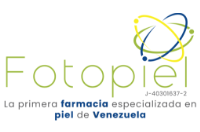Dermatofitides. Una entidad clínica casi olvidada
Palabras clave:
dermatofitides, reacción ides, dermatophytids, dermatophytid reactionResumen
Introducción:Las dermatofi tides se deben a una reacción de hipersensibilidad a los antígenos dermatofíticos. Objetivo: Determinar las diferentes formas clínicas de dermatofi tides de pacientes que han acudido a la consulta de micología del Instituto de Biomedicina durante el período enero-septiembre 2010. Materiales y métodos:Se realizó examen directo y cultivo tanto del área de sospecha de micosis superfi cial como de la reacción ides, apertura de historia clínica, exámenes de laboratorios de rutina que incluían VIH, y determinación del tipo de dermatofi tides según la clasifi cación de Arêa Leão. Se excluyeron aquellos pacientes que habían recibido tratamientos tópicos o sistémicos. Resultados:Se identifi caron 6 casos de dermatofi tides, siendo la forma clínica más frecuente la liquenoide con un 50% de los casos correspondiente a 3 pacientes, seguido de la forma dishidrosiforme con un 33,33% (2 pacientes) y por último la exantemática con 16,67% (1 paciente).Discusión: El espectro de las manifestaciones clínicas de la reacción ides es muy variado, es una entidad de la que cada vez se habla menos pero que es importante conocerla para evitar tratamientos innecesarios y poder diferenciarla de otras dermatosis, de allí la importancia de su sospecha clínica y de la evaluación integral del paciente que acude a consulta.Abstract:
Introduction: Dermatophytids are due to a hypersensitivity reaction to dermatophyte antigens. Objective: Determine the different clinical forms of dermatophytids of patients who attended the mycology outpatient clinic of the Instituto de Biomedicina during the January-September 2010 period. Materials and Methods: A direct examination and culture of both the area suspicious of superfi cial mycosis as well as of the dermatophytid reaction were carried out, and a clinical case history and routine laboratory examinations including HIV, and the determination of the type of dermatophytid according to the Arêa Leão classifi cation were also done. Patients who had received previous topical or systemic treatment were excluded. Results: Six dermatophytid cases were identifi ed; lichenoid was the most frequent clinical form seen in 50% of the cases, corresponding to 3 patients, followed by the dishydrosiform with 33.3% (2 patients) and lastly the exanthematic form with 16.67% (1 patient). Discussion: The spectrum of clinical manifestations of the dermatophytid reaction is extremely varied; it is an entity which is being continuously less mentioned, but it is important to recognize it to avoid unnecessary treatments and to differentiate it from other dermatoses; therefore the importance of its clinical suspicion and of the integral evaluation of the patients who attend the outpatient clinic.
Descargas
Número
Sección
Artículos
Licencia
Publicado por la Sociedad Venezolana de Dermatología Médica, Quirúrgica y Estética







